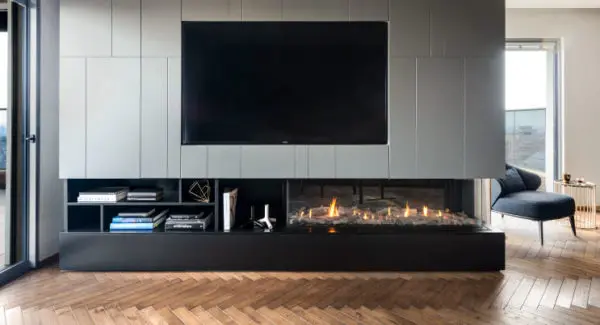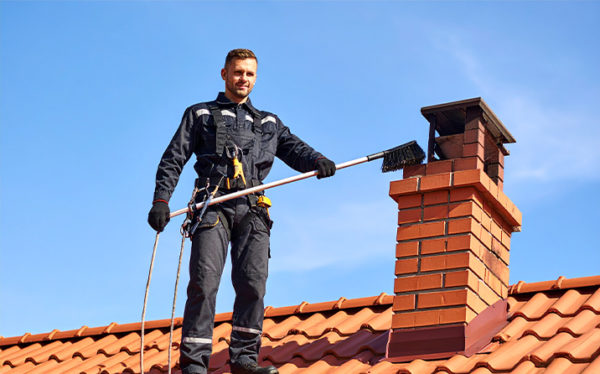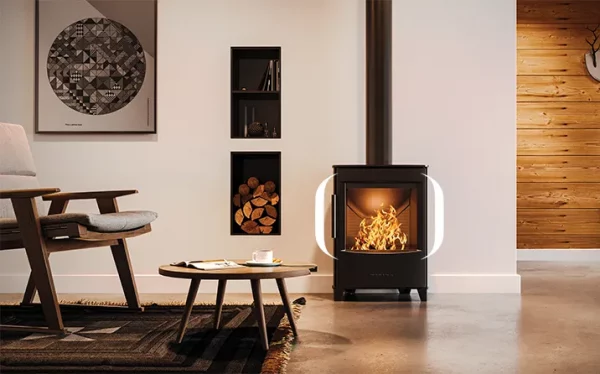Installing a wood-burning stove in your home is a project that requires careful planning and compliance with numerous safety standards. Whether you want your stove installed by a professional or are considering doing it yourself, it’s essential to understand each step clearly. Before starting the installation process, consult our guide to choose the type of wood-burning stove suited to your needs.
Prerequisites and preparation before installing a wood-burning stoves
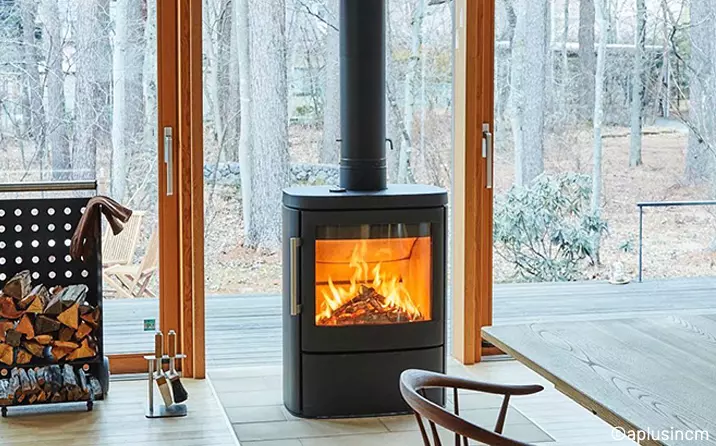
Essential technical and administrative check
Installing a wood-burning stove requires several key checks. The layout of your home, particularly the type of room to be heated and its insulation level, will largely determine the technical specifications of your wood heating appliance. Certified RGE professionals from the SEGUIN network systematically carry out a thorough study of your home to ensure optimal installation.
Checklist of Preliminary Checks:
- Condition of the existing chimney or feasibility of installing a new flue
- Type of suitable flue: traditional masonry or lined
- Building permits: declaration at city hall, condominium approval
- Floor resistance at the stove’s installation point
- Compliance with DTU 24.1 standards for the smoke evacuation system
Budget and financial assistance for installing your wood-burning stove
Installing a wood heating appliance is an investment that can benefit from several support schemes. By using RGE-certified installers from the SEGUIN network, you may access:
- MaPrimeRénov’: up to €2,500 depending on income
- CEE (Energy Savings Certificates)
- Reduced VAT at 5.5% for installation work
- Regional aid specific to wood heating
Choosing the ideal location to install your wood-burning stove
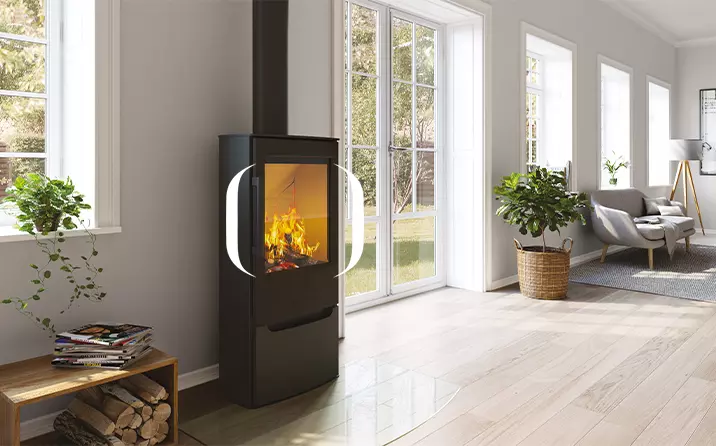
Technical criteria for optimal placement in the room
To install your wood-burning stove effectively, choosing the room and its placement is crucial. Seguin experts analyze several factors to determine the best spot for your appliance:
- A central location in the main room to optimize heat distribution
- Proximity to an existing chimney or exterior wall for the flue
- Adequate space for loading and maintaining the stove
- Safety distances from combustible materials
Safety distances for installing a wood-burning stove
When installing a wood-burning stove, safety standards impose strict minimum distances:
- Combustible wall: The distance between the stove and a wall made of combustible material (like wood or unprotected plasterboard) must generally be 3 times the diameter of the flue or at least 37.5 cm, unless otherwise specified by the manufacturer.
- Protected wall: If a thermal protection screen is installed (e.g., a metal plate or fireproof panel), the distance can be reduced to around 15 cm, depending on the certification.
- Furniture and flammable objects: Keep a distance of at least 1 meter between the stove and any flammable object.
- Floor: The stove must be placed on a heat-resistant material, such as metal, glass, or ceramic, if the floor is combustible. The hearth plate should extend 30 cm in front and 20 cm to the sides of the stove.
- Roof outlet: The flue must extend at least 40 cm above any part of the roof within 8 meters.
In all cases, a SEGUIN expert will guide you and ensure compliance with regulations so you can safely use your wood-burning stove.
The chimney flue: a crucial element of the installation
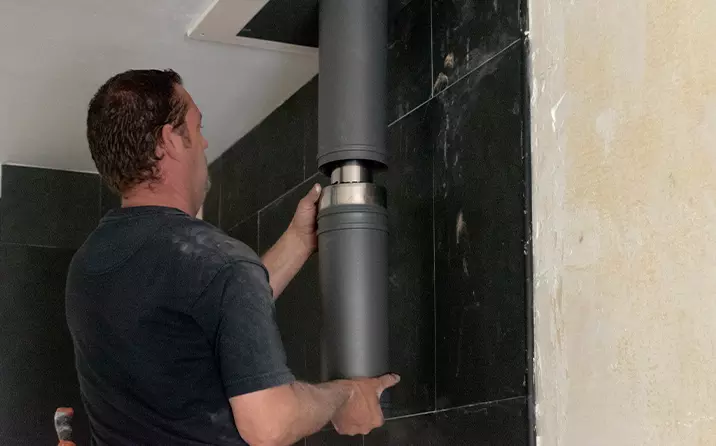
Types of flues and lining standards
The chimney flue, whether existing or newly installed, must have a diameter suited to the chosen stove. Seguin professionals ensure strict compliance with DTU 24.1 standards governing:
- The flue diameter based on the stove’s output
- Appropriate lining for renovating existing flues
- Thermal insulation of the chimney flue
- Minimum height of the roof outlet
Detailed steps to install a wood-burning stove
1- Preparing the room and protecting the floor
Installing a hearth plate:
If the floor is combustible (wood, parquet, carpet), a fireproof hearth plate is mandatory. It can be made of steel, tempered glass, or ceramic.
The plate must extend 30 cm in front and 20 cm to the sides of the stove, according to standards.
Clean the floor beforehand to ensure a flat, stable surface.
Installing wall protection:
If the wall behind the stove is combustible, install a thermal screen (steel plate, fireproof panel, or certified insulation).
Ensure an air gap is maintained between the wall and the screen to dissipate heat.
Checking levelness:
Use a spirit level to ensure the floor is level where the stove will be placed.
Adjust with shims if needed to stabilize the stove.
2- Installing the air intake in the room
Creating an air inlet:
Modern stoves often require a dedicated air intake, especially in well-insulated homes.
Drill a wall or floor opening for an external air supply. Choose a spot near the stove to reduce pressure loss.
Installing a ventilation grille:
Install a grille on the air intake to prevent debris, insects, or animals from entering.
Check the required dimensions in the stove’s manual, based on power (usually in cm² of free area).
Checking the draft:
Insufficient or excessive draft can affect stove performance.
Test the flue with a smoke pellet or measuring device to ensure it’s suitable. Adjust if needed with a draft regulator.
3- Installing and connecting the wood-burning stove
Positioning the stove accurately:
Place the stove according to the safety distances recommended by the manufacturer.
Recheck alignment and stability before connecting.
Connecting to the chimney flue:
Use appropriate pipes per the manufacturer’s recommendations (typically enamelled steel or stainless steel).
Pipes should not exceed a 45° incline and should avoid excessive elbows to ensure proper draft.
Installing seals:
Apply sealing joints (fibreglass ropes or high-temperature mastic) to the connections between the stove and the flue.
Ensure each joint is tight to prevent smoke leaks.
Final check before use:
Verify all elements are correctly installed (protection, connections, air intakes).
Test the stove with a first low-intensity burn to check draft, smoke clearance, and tightness.
Have the installation inspected by a certified professional if necessary to ensure compliance.
Standards and regulations for installing a wood-burning stove
SEGUIN, the French leader in wood heating, guarantees compliance with key standards:
- Certification of each stove type per European standards
- Compliance with DTU 24.1 for flue installation
- Ongoing training for RGE installers in installation techniques
- Manufacturer warranties validated by professional installation
Commissioning and maintenance of your wood-burning stove
After installing your wood-burning stove, SEGUIN experts carry out:
- A complete test of the heating system
- A check of the flue and seals
- A usage demonstration in your room
- A personalised maintenance guide
To ensure your stove’s longevity, regular maintenance is required:
- Chimney sweeping twice a year
- Regular cleaning of the glass and firebox
- Annual check of the lining and seals
- Periodic inspection of the smoke evacuation system
In conclusion, installing a wood-burning stove requires expertise and precision. To ensure safety and optimal performance, explore our guide for choosing your appliance and trust SEGUIN’s network of certified installers. Our 45 years of experience and network of 170 RGE professionals guarantee a compliant, high-quality installation that maximises the efficiency of your wood heating system.
The DTU 24.1 standard
The main standard to comply with is DTU 24.1. This reference document governs the installation of flue systems for wood stoves. It details all the technical specifications to ensure installation compliance.
Rest assured, certified installers are well-versed in this standard and will guide you through a fully compliant installation.
Other regulatory considerations
Beyond DTU 24.1, you’ll also need to consider:
- Type of appliance (log, pellet, etc.)
- Stove material (cast iron, steel, etc.)
- Appliance size based on your needs
Don’t hesitate to contact a SEGUIN advisor to ensure you choose a compliant wood stove adapted to your home.
Lifespan of a wood-burning stove
Like any equipment, a wood stove has a lifespan depending on the quality and complexity of its components. Proper maintenance is essential to extend its life.
Average lifespan
A well-maintained log stove can last 10 to 20 years. Pellet stoves, which have more mechanisms (auger, fan, etc.), generally have a shorter lifespan of about 10 years.
Manufacturer warranties
Wood stoves also come with manufacturer warranties, which can vary from 2 to 10 years depending on the brand.
Maintenance: key to longevity
Regular maintenance of the firebox and flue is crucial to ensure your stove’s proper function and long-term safety:
- Annual (or biannual) sweeping by a certified professional
- Regular emptying of the ash drawer
- Cleaning the firebox glass
Only a qualified chimney sweep can issue a sweeping certificate, proving maintenance was done in case of an insurance claim.
Why choose a wood-burning stove over other heating solutions?
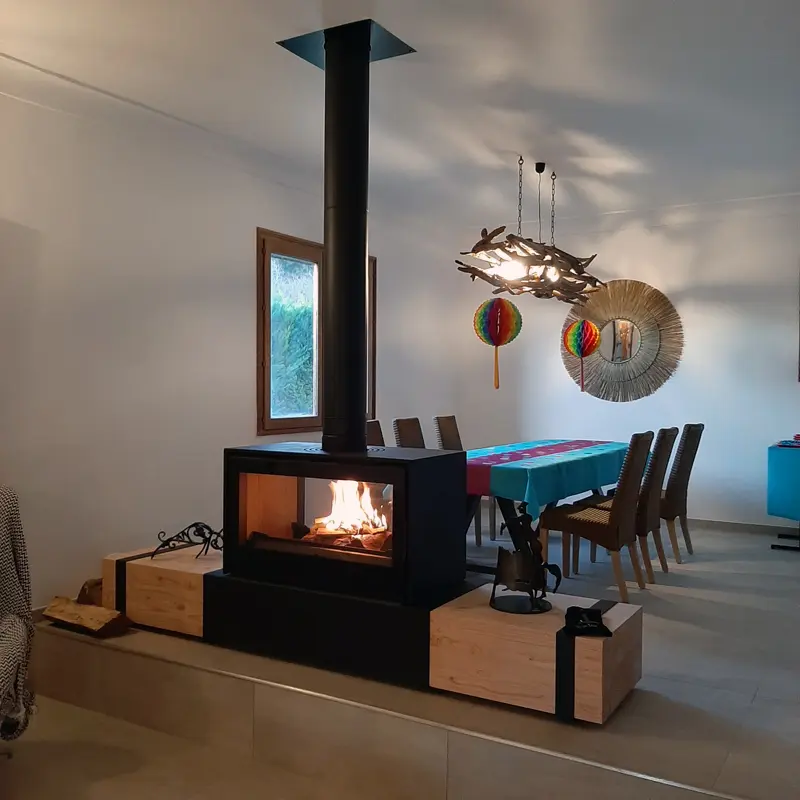
Besides wood stoves, other heating solutions include electric heating, gas boilers, or oil-fired boilers. So why opt for a wood-burning stove?
Wood stoves: autonomous and cost-effective heating
Log stoves are autonomous heating appliances that do not require electricity to function. Although fuel loading is manual, the cost of heat production is far lower than electric heating, for example.
Eco-friendly heating
Compared to other traditional heating methods, wood heating is considered eco-friendly. Wood is a renewable energy source with a low environmental impact, unlike fossil fuels.
An ideal supplemental heater
Wood stoves are often used as supplemental heating or during transitional seasons to avoid running central heating continuously. They help save energy while maintaining pleasant warmth.
For help choosing and installing your wood-burning stove, feel free to contact a SEGUIN expert.
What budget should you plan for a wood-burning stove?
When planning to buy a wood stove, it’s important to have a full picture of the expected budget. This includes the cost of the appliance, supplies, and labour.
Cost of the appliance
Wood stove prices vary depending on brand and features. For around €2,500, you can find entry-level models suitable as backup heaters. However, it’s recommended to choose higher-quality appliances in the €3,500–€5,000 range, offering better performance, reliability, and autonomy. Above this, you’ll find high-end models, including pellet stoves or masonry stoves for large spaces.
Cost of Supplies
In addition to the stove, budget for installation materials such as the flue, roof outlet, connections, air intake grilles, etc. Expect between €1,000 and €3,000 for supplies.
Labour costs
Labour for installation can cost between €500 and €2,000 depending on the scope (creating a flue, removing an old unit, etc.).
Total investment
The total cost of a wood stove project can range from €3,500 to €8,000. But remember, financial aid such as MaPrimeRénov’ in France for example can significantly reduce the final bill.

